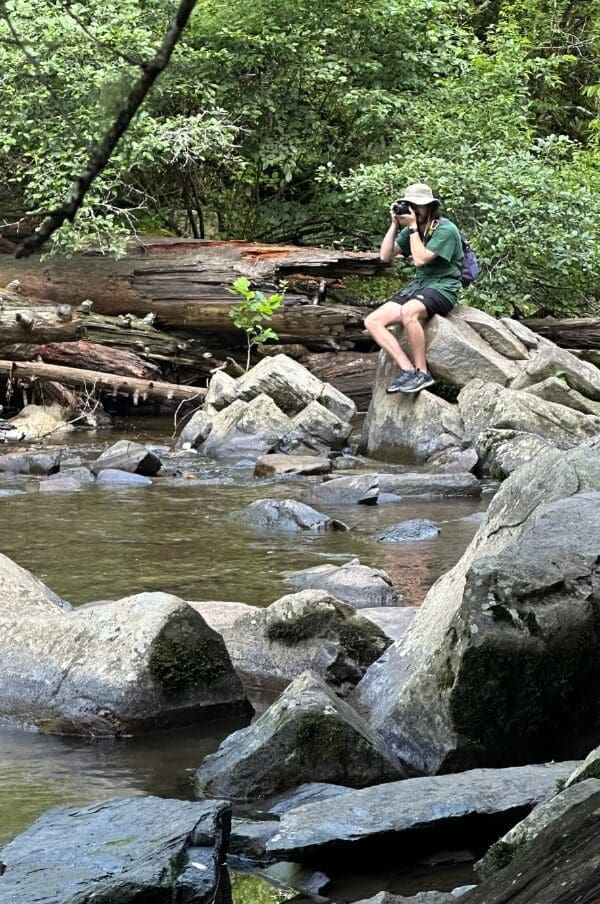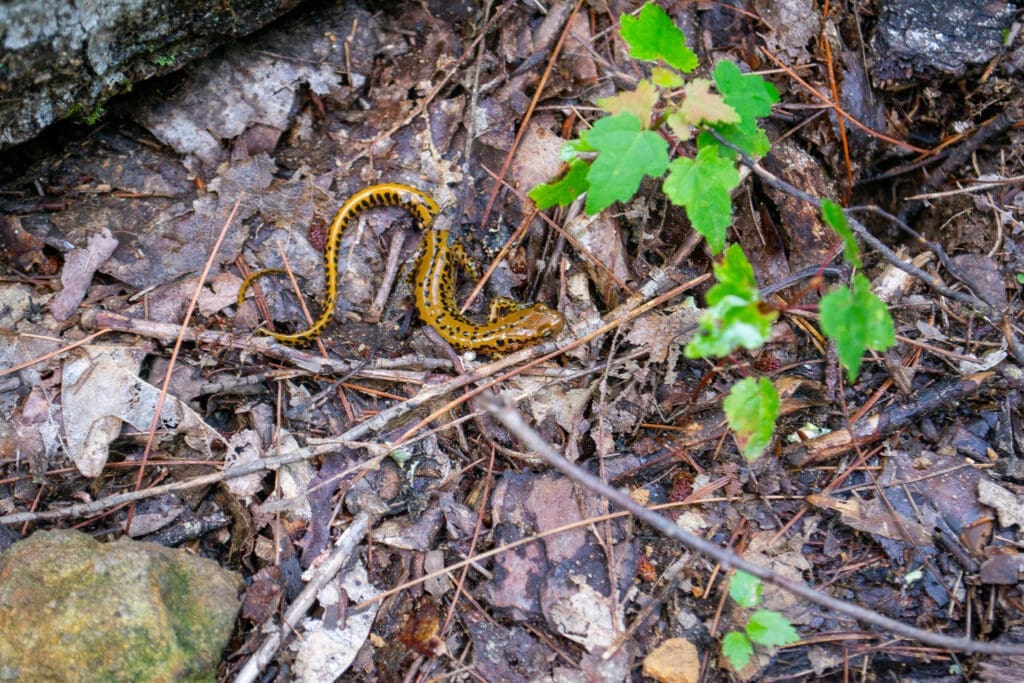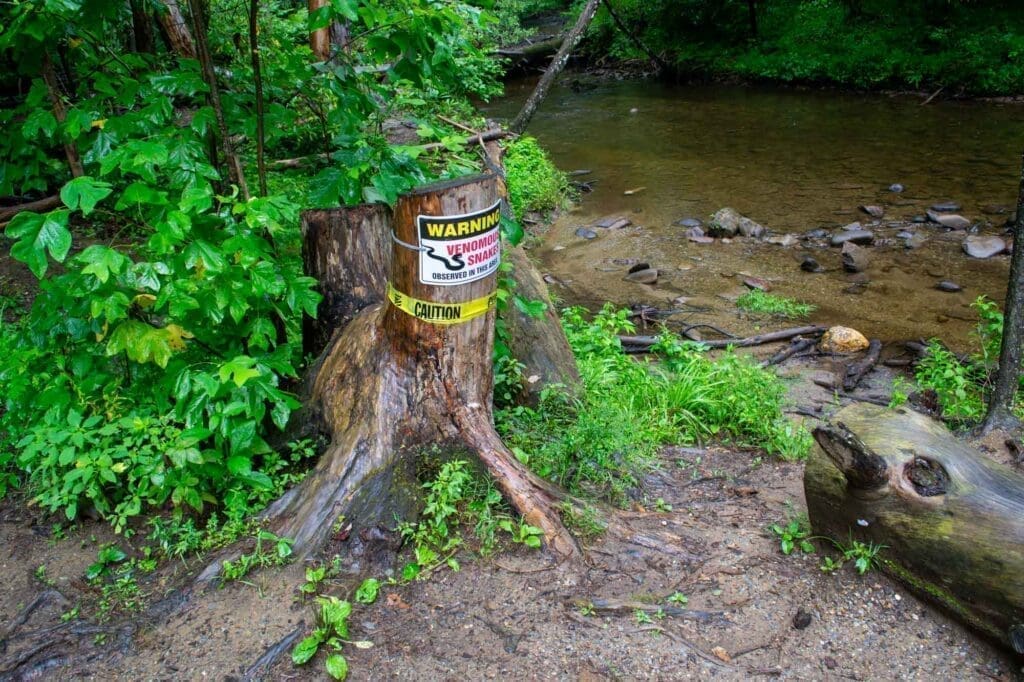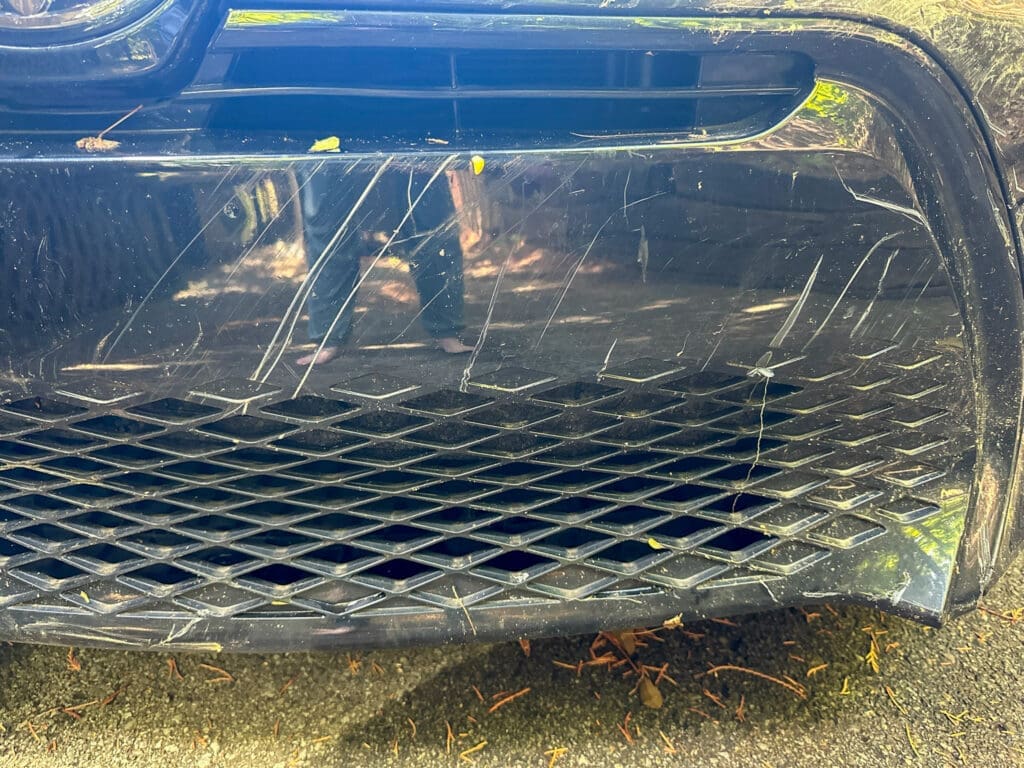This article represents the opinions of its author. The views expressed here are not necessarily representative of The Sunrise News staff as a whole.
The Great Smoky Mountains, found in the Southeast, are some of the oldest mountains in the world. They’re a seemingly endless range of mountains covered by old-growth forests and are inhabited by tens of thousands of different species. The national park and World Heritage Site offers a unique and critical space for cultural and historical preservation that has visitors taking steps into the nineteenth century and earlier. Visitors also get a chance to learn about Indigenous communities and early settlers.
I could keep going about the unique biodiversity, reintroduction of species like the elk, black bears or the swathes of hiking trails including the Appalachian Trail, but, the Smokies are also the first national park that I’ve ever visited. I know, I know — I write about hiking and being outdoors but I’ve never been to a national park before. I’m not sure how I haven’t until this point, but I have now.
The trip was about a week long, and while I was in desperate need of a camping trip, it was also a trip to Gatlinburg, Dollywood and the surrounding area; it was also July, and, believe it or not, temperate rainforest summer conditions are not the best for a Smokies trip.

My girlfriend and I and our two families made the trip as a late graduation trip for the two of us. When we weren’t tourists in Gatlinburg, Pigeon Forge or Dollywood, we were outdoor enthusiasts exploring the Great Smoky Mountains.
I would love to tell you in detail about each hike or national park-related experience we pursued, but I’m going to tell you the two absolute musts if you were to make this trip yourself: Clingmans Dome and Cades Cove/Abrams Falls.
While there are 150 official hiking trails in the Smokies — and I would like to do as many as possible — these two hikes are some of the more unique ones I’ve done in recent memory.
Now, speaking of memories, this trip was meant for exploring, hiking and being with family, but I also took it as an opportunity to try out something new: photography. If you haven’t noticed, the majority of the photos I’ve used so far have been taken by my close friend and roommate, Robbie Vandeberg. Although I wish he was at the Smokies with us, having fun and taking photos, he isn’t around every time I go hiking.

Through my constant interactions with not only Robbie but my younger brother and other friends who enjoy the process of finding a decent composition, taking photos and then editing them, photography as a hobby and creative outlet has been knocking at my door. That along with my constant need to try new things and to be independent led me to the endeavor.
So, my brother gave me our mom’s Nikon d3100, a 18-55mm lens and a 70-300mm lens to learn the basics and attempt to capture the world around me. I decided to bring them along with me to our trip and I don’t regret a single thing.
But, going back to the hikes, though, we went to Clingmans Dome around the middle of our trip. You can find numerous trails that lead you to the top of the man-made structure, but parking is also available to make the one mile trek along a steep, paved trail.

At 6,643 feet, Clingmans Dome is the highest point in the Great Smoky Mountains. Climbing the 360 degree observation tower gives you views of the great peaks and valleys of the national park. However, when we made the trek, it was foggy and cloudy to the point where we could hardly see some of the trees at the peak.
The road to the observation area is windy and steep, but made for some fun photos. As we arrived, parts of the forest opened up to give us a glimpse of what we were driving into. But, as we kept getting higher, it kept getting cloudier until we realized a rain cell was moving in.
Our views were obstructed. It was an easy 10 to 20 degrees colder than the lowlands of the Smokies. And, it was raining. We parked, threw on some layers and found the visitor center to try to wait out some of the rain until we said, “whatever,” and went up to the tower.

The entire time we were walking up the steep incline I kept stopping to take in the world around me. There’s something about visiting a place so secluded and out of reach, that also sees massive amounts of people every day.
The first time I heard of Clingmans Dome was in my National Parks and Lands Class at the University of Montevallo. We discussed the significance of the word “natural.” What does it mean to be in nature? Why do we consider some things natural and others not? What is our role in creating or preserving the “natural”? Is it responsible to build such a massive structure like the observation tower to attract tourists? The questions were endless as our professor played devil’s advocate during our class.
Those questions were running through my head as I walked up the winding ramp when I spotted something in one of the trees. It was bright yellow and I swore it had moved. I whipped out my camera and threw on my zoom lens. I found a good angle, looked through my viewfinder and… it’s a tennis ball? I laughed out loud to myself at the irony of contemplating the natural world to find a very unnatural object in such a beautiful tree.

I arrived at the top of the tower, and, again, I could hardly see anything, but it was still a memorable experience. I can’t even imagine what the unobstructed views would have looked like. Coming down, we found a side trail for the A.T. and, for some laughs, my parents and I trekked down it a few feet to say we’ve officially been on the A.T.
If I’m being honest, it was like stepping into another world under the canopy of spruce-firs. A gloomy darkness welcomed us which felt like it wanted me to go further, but that trip would, unfortunately, have to wait for another day.

Coming down the paved trail was much easier than going up. While walking with my dad, we saw multiple of what we thought were side trails but each of them ended up being erosion or what we thought were animal trails with patches of grass and plant life flattened down.
Overall, I had fun taking photos — albeit in the cold rain. It was challenging to go from taking photos in the sunlight or under a canopy to overcast. Trying to take landscapes when the entire sky is a light gray, the mountains are a darker gray, the trees are almost a green-gray and my hands are becoming stiff in the cold is not easy — especially since it was my third or fourth day using a camera.
We went home afterwards and called it an early day because of the weather.

The next and last hike we went on was actually planned the night before as an add-on to our itinerary. We originally planned to do the 11 mile one-way driven loop around Cades Cove, a historic and scenic valley in the Smokies. There are plenty of stops on the drive to view old churches, log buildings and different hiking trails. But, we wanted to see wildlife too. On top of that, we also wanted to hike.
If you decide to do the scenic drive, be aware that from May to September the loop is car-free on Wednesdays and open to bicycle riders.

Leaving early in the morning meant we had a higher chance of seeing wildlife. The majority of animals that we would want to see — deer, elk, turkey, black bears and other mammals or birds — are crepuscular. Crepuscular animals are animals that are active during dawn and dusk rather than a nocturnal animal who is only active during the night or diurnal animals who are only active during the day.
We saw songbirds, wild turkey and their chicks and white-tailed deer. I was hoping to see some black bears or, if I was lucky, a broad-winged hawk. As we made it through the valley, we were surrounded by fields and pastures of different grasses and wildflowers. My mom said it was like we were driving through an old romance novel.

The hike we chose, Abrams Falls, is located past stop number 10 and the turnoff is clearly signed. Abrams Falls is a five-mile moderate-to-difficult round-trip hike that takes around four hours to complete. At the end of the trail is a stunning 20-foot wide-mouthed waterfall.
Before you get to the waterfall, you have to make the rocky hike up and down some decent elevation gain while you listen to the running water off the side of the trail. At times I could catch glimpses of wildlife in the trees, or if I looked closer, right in front of me swimming in the water or scurrying under boulders.

We saw multiple lizards, a salamander, a great blue heron, songbirds and finches, crawdads, minnows and even some colorful plant life like blackberries and lillies, but no black bears.

PSA: If you do see a black bear, awesome! However, please follow National Park Service best practices here. The biggest thing to remember for a black bear is that they are still wild animals. It is illegal to feed them or approach them — if you can just walk away slowly and carefully ensure the bear does not follow you or change its behavior. Again, more information on what to do if you see a black bear in the wild can be found here.
Taking photos while on the trail kept reminding me of how much I seemed to miss on previous hikes. In the past I would often zone out or focus on my steps to get to the end of the trail, or until someone else pointed something neat out. This time around, it was me spotting things, or my parents, as they both also are always looking for cool things on the trail.
Eventually, after the ups and downs of walking along a gorge and crossing three narrow bridges, we got to the waterfall. The waterfall and surrounding area was spectacular. After learning more about how to take photos of waterfalls, courtesy of my mom, I shifted to trying to find some smaller critters in and around the water.


I was hoping to find some larger amphibians around the waterfall area but only found small tadpoles. I’m not complaining though because there were plenty of photo experiences for me.
After being hurried by my parents to go ahead and leave — I could’ve been there another three hours just looking for more critters around the streams and boulders — we got back on the two and a half mile trail.

I mentioned that I found a salamander earlier. On the way back up from the waterfall, I was desperate to find one since the Smokies are known as the salamander capital of the world. So, I went herping! Herping is an activity popular among herpetologists, scientists who study amphibians and reptiles. They find dead logs or debris along a trail and turn them over to record any critters they might find.
To not disturb the animals anymore than I already was, I made sure to turn the log back. Another rule I was taught was to always turn the log towards yourself, so that if there’s a snake or something that might look dangerous and you let go of the log, it just rolls back away from you; it also helps so that if the animal scurries way it does so away from you rather than towards. The last rule was to never put your fingers or hand near the bottom of the log.
Under the second log I turned over, there was a beautiful blue ridge two-lined salamander. I was able to take a photo of it and then let him be after turning the log back over.

On the way back to the parking lot we also spotted a great blue heron, but that was about it. We were pretty quick getting back to our car because the humidity and temperature were rising higher in the early afternoon.
Back on the loop, we made our way to the visitor center. Unfortunately, it started raining pretty hard. But that gave me a chance to hang out, get a stamp for my National Parks Passport and talk to some of the rangers.

The visitor center at Cades Cove is one of the main stops for many people because it’s right next to the historic center. They have the original Cable Mill from 1870 operational and grinding corn, the Gregg-Cable house built in 1879, a smokehouse, a blacksmith and other historical buildings.
As the rain calmed down, I made my way to the Cable Mill. Right before the mill, there are several old millstones that are taped off. While I was walking past them, a park volunteer was walking alongside me as I said “snakes!?” when I saw a warning sign by the taped off stones.
Jack, the park volunteer, then started to tell me how often they find copperheads in the area, and the occasional timber rattlesnake, which are the only two venomous snakes in the park. I told him about my job, how I love snakes and love to handle non-venomous ones.

So, Jack started to give me a snake tour of the area. From the millstones, he brought me to the wooden flume that leads to the mill and started pointing out some other spots that he had seen snakes earlier in the day. As we were talking, another park volunteer came up to us — Jack identified him as the “snake guy.” I never caught his name but he gave Jack a snake hook and told us to go over to “the stump.”
Walking from the flume over to the stump, we stopped by another old building that was taped off due to snakes, but again, we didn’t find any. Finally we got to the stump, which was just an old tree stump with some erosion and brush around it — perfect for a snake hole — and Jack started telling me how often they find copperheads and their young peeking out from the base. But, alas, we didn’t find any.

Walking back to the Cable Mill, we began walking back to our car as the rain started back up again. I meandered and floated along the path until I ended up getting pestered by my family to hurry up and leave before the actual thunderstorm arrived.
I’d like to tell you what the drive home was like but I ended up falling straight asleep due to how early I’d woken up. It was an early day, accompanied by a not-very-easy hike and I was wiped. Overall, though, I think I would put Cades Cove and Abrams Falls somewhere at the top of my list for hikes and outdoor spots.

It’s such a unique area that with the history present along with the park staff and interpretive educational opportunities, it allows just about anyone a glimpse into the lives of the original families that settled there. I’m grateful that the NPS has been able to preserve the area so well and welcomes millions of people every year to view such an incredibly diverse part of our country.
Now, I’ve mentioned wildlife that we found in the park. It’s important to remember that all of these animals are wild animals, and that we are in their homes. We must follow the primary principle of leaving no trace while we are in these environments. But, sometimes, because of the constant encroachment of human development in a place like Gatlinburg and on the touristy outskirts of the national park, the animals might get curious and try to find some easy sources of food near where we sleep.

One of those animals is the black bear. There are entire teams of material scientists, engineers and outdoors people who do their best to make sure this doesn’t happen either through behavioral studies and the manufacturing of “bear-proof” storage containers. Unfortunately, for us, and for the bears too, there is very little that can stop a bear from getting into something that it wants.
As a general reminder, it’s good to know best practices for what to do if you’re in bear country. Despite our efforts to try to see one at a safe distance like in Cades Cove, we didn’t have to go very far in the first place. For several nights, we were put in a frenzy as a mama bear and her cubs tried to open our trash cans outside our cabin.
Keep in mind, these cans are locked in a steel container with a chain keeping it shut, and they still somehow opened it enough to pull trash out. My mom first heard them outside her window, followed by my dad and the rest of us who saw one of the cubs in a tree right outside our balcony. We made plenty of noise to get them to go away and ended up moving our trash to a second and more secure container on the side of the house.


Luckily no one was harmed. Hopefully the bears were alright too, because they ended up damaging my girlfriend’s car. There were bear scratches and marks all over her front bumper and the steel trash container was inches away from her hood. It was an interesting experience, and a conflicting one too.
It was awesome to see black bears at night, but also concerning that they were so active at such a late hour, and so close to human development. Unfortunately, none of us got any clear photos, but, trust me when I say, they were both the cutest and most terrifying animals I’ve ever been near.

My trip to the Smokies was a near-perfect trip. I got to spend time with the people I love, embark on a tourist’s journey through the streets of Gatlinburg, enjoy the serenity of the Smoky Mountains and develop a new hobby that allows me to open new doors in my expressive freedom. I highly recommend a trip to the South’s national park. And, although it’s not in Alabama, it still has some longleaf pines to find.
Want to get early access to columns, unique newsletters and help keep The Sunrise News active? Then support us on Ko-Fi!
This article represents the opinions of its author. The views expressed here are not necessarily representative of The Sunrise News staff as a whole.


